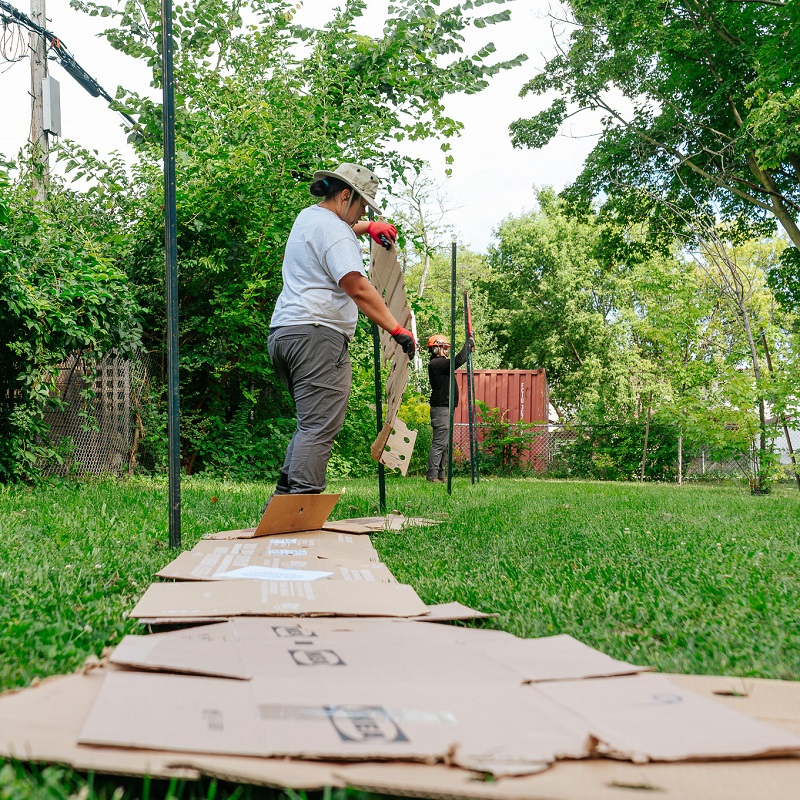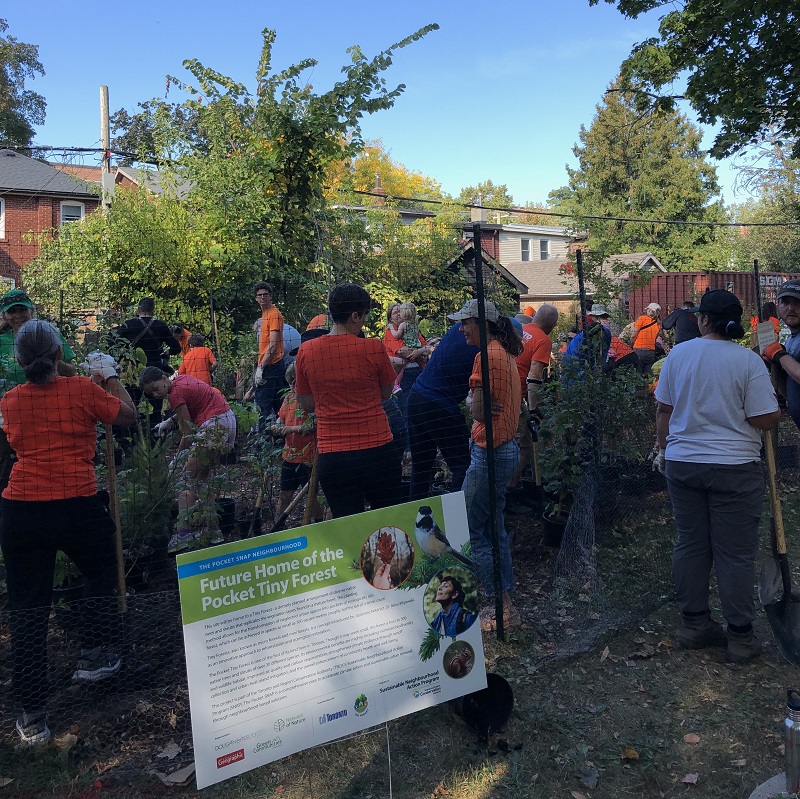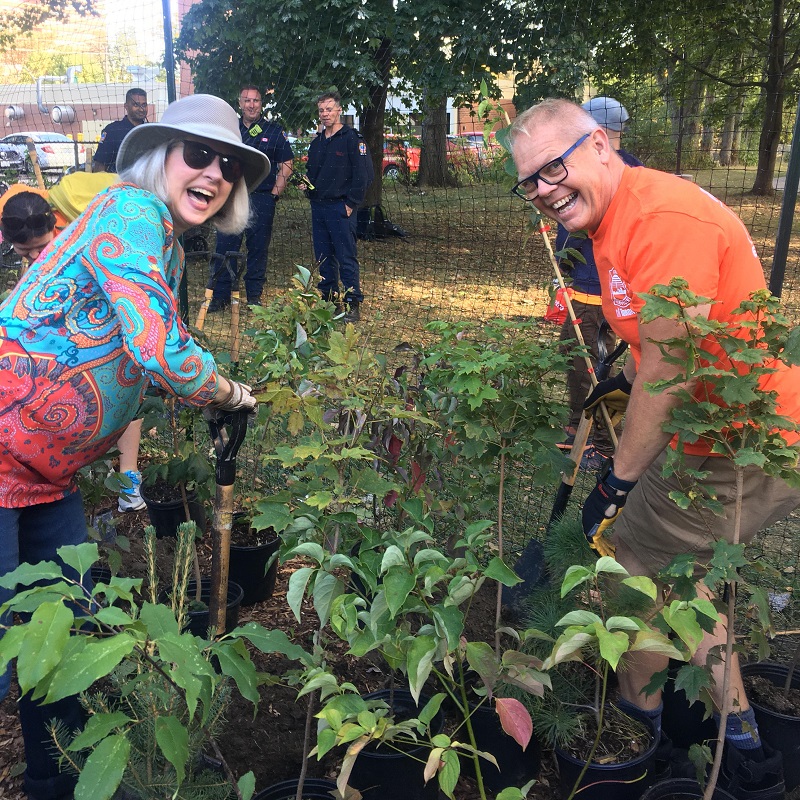A Breath of Fresh Air for the Pocket Community
In the heart of Toronto’s urban landscape lies a hidden gem that aims to bring nature’s harmony to the concrete jungle.
On September 30, 2023, Toronto and Region Conservation Authority’s (TRCA) Sustainable Neighbourhood Action Program (SNAP), in partnership with the City of Toronto, the Pocket Community Association (PCA), and the Network of Nature, hosted a community event to plant the Pocket Tiny Forest.
The SNAP team would like to thank Paula Fletcher, City Councillor for Ward 14 Toronto-Danforth and a member of TRCA’s Board of Directors; Julie Dabrusin, Member of Parliament for Toronto–Danforth; and the 50-plus community volunteers who joined us to help plant the tiny forest.

This innovative project is one of the first of its kind in Toronto, bringing the ecological benefits of tiny forests to the Pocket neighbourhood.
Tiny forests – also known as micro forests or mini forests – found their roots in the visionary mind of Japanese botanist Dr. Akira Miyawaki in the 1970s.
His innovative approach to reforestation and ecological restoration has since sparked a global movement. Thousands of tiny forests now flourish across the world, spanning Europe, Africa, Asia, South America, Russia, the Middle East, India, and of course, Japan.






Site preparation for the planting of the Pocket tiny forest.
These mini marvels mimic the complexity of mature forests, with a densely planted mix of native trees and shrubs creating vegetation layers like a natural canopy, sub-canopy, understory, and shrubs.
The planting density of tiny forests encourages a fierce competition for access to sunlight, water, and nutrients, creating rapid growth – these native plants mature in just 20-30 years, in contrast to the typical 150-200 years of natural forests.
Tiny forests aren’t intended to replace natural woodlands. They’re designed to breathe life into underutilized, damaged, or neglected urban spaces.
These lush oases can thrive in areas as small as 100 square metres – approximately half the size of a tennis court.






The Pocket tiny forest community planting event.
Over the summer, TRCA conducted horticultural soil sampling at the designated planting location and finalized site preparation, including staking out boundaries, suppressing weed growth with cardboard, enriching the soil with compost and mulch, and installing deer fencing to protect the area from wildlife and pedestrians.
As the Pocket Tiny Forest emerges, it brings the promise of increased biodiversity, improved air quality, better stormwater management, reduced urban heat island effect, and a boost to community health and well-being.
This tiny forest represents not only a green oasis in Toronto, but also a shining example of what communities can achieve when they come together to embrace nature.
This project was made possible with support from Natural Resources Canada’s 2 Billion Trees Program and Green Communities Canada.
